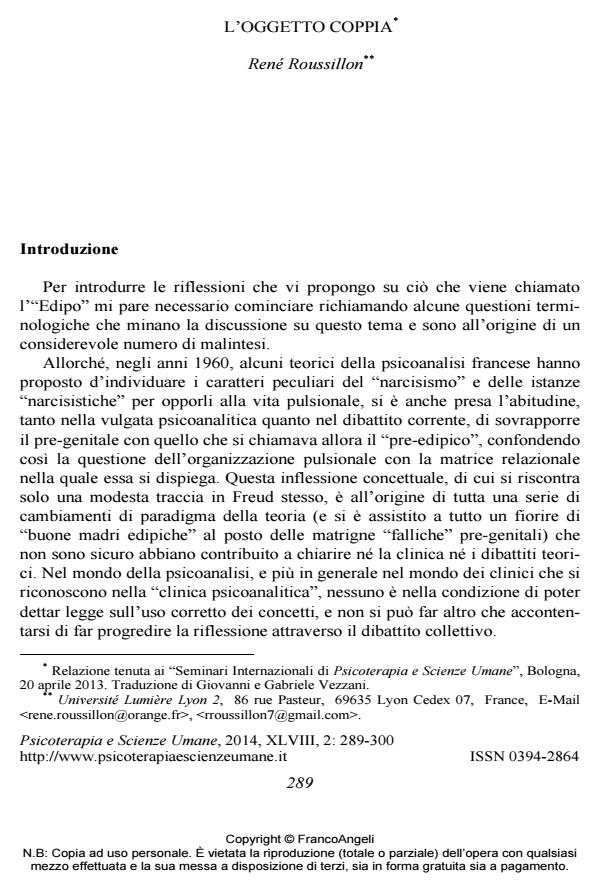The object couple
Journal title PSICOTERAPIA E SCIENZE UMANE
Author/s René Roussillon
Publishing Year 2014 Issue 2014/2
Language Italian Pages 12 P. 289-300 File size 50 KB
DOI 10.3280/PU2014-002005
DOI is like a bar code for intellectual property: to have more infomation
click here
Below, you can see the article first page
If you want to buy this article in PDF format, you can do it, following the instructions to buy download credits

FrancoAngeli is member of Publishers International Linking Association, Inc (PILA), a not-for-profit association which run the CrossRef service enabling links to and from online scholarly content.
The problem of the Oedipal organization is discussed from the viewpoint of the progressive structuring of a particular psychic object, the "object couple". This object is originally derived from the first representations of being in relationship with the mother, i.e., from a first "relational style". This first representation later becomes more complex when the father begins to be an object of desire from the mother, and the child progressively organizes his schemas from "schemas of being with the object" to "schemas of being with an object who is with another object". The child later will continue the construction of the "object couple" in his experiences where he will be able to be "alone with his libidinal drive in the presence of the couple". The Oedipal situation will be constructed according to different types of libidinal organizations that will appear in the course of development.
Keywords: Oedipus, couple, schemas of "being with", narcissistic ideal, libidinal organization
- Challenging Oedipus in changing families: Gender identifications and access to origins in same-sex parent families created through third-party reproduction Vittorio Lingiardi, Nicola Carone, in The International Journal of Psychoanalysis /2019 pp.229
DOI: 10.1080/00207578.2019.1589381
René Roussillon, L’oggetto coppia in "PSICOTERAPIA E SCIENZE UMANE" 2/2014, pp 289-300, DOI: 10.3280/PU2014-002005